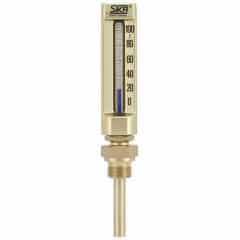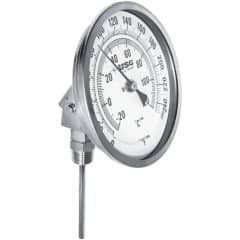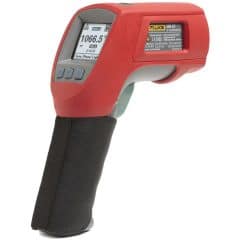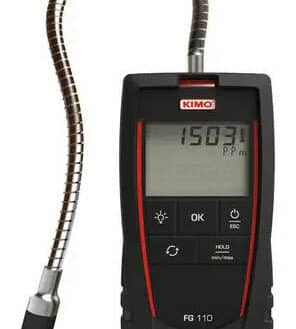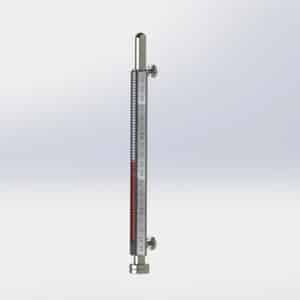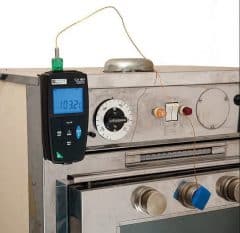
CHAUVIN ARNOUX portable thermometer
Electronic contact thermometers have a sensor and an electronic circuit that converts the electrical signal from the sensor into a temperature reading on a display.
There are three types of electronic thermometers:
Resistance thermometers
The electrical resistance of a metal conductor varies with temperature. Resistance thermometer sensors are made with a coiled metal wire whose electrical resistance is known, and temperature measurements are determined by measuring variations observed in its resistance.
The metals most commonly used for sensors are copper, nickel and platinum. Each of these metals can measure a certain temperature range. The most popular are PT100 and PT1000 platinum sensors, which have a resistance of 100 and 1000 Ohms respectively at 0°C.
Advantages:
- These thermometers are highly accurate, and are used as reference thermometers.
- Resistance thermometer sensors provide a more linear signal than other electronic sensors.
- They offer a wide measurement range (from -250°C to 1100°C for platinum sensors).
Disadvantages:
- Response time is slow compared to thermocouples.
- They are more expensive.
- They are bulkier.
Thermistor thermometers
A thermistor is a semiconductor (made of sintered metal oxides) whose electrical resistance varies greatly with temperature (10 times more than a platinum sensor).
There are two types of thermistors:
- NTCs (Negative Temperature Coefficients), whose resistance decreases with increasing temperature, are used in temperature ranges of -200°C to 1000°C.
- PTCs (Positive Temperature Coefficients), whose resistance increases with increasing temperature, are used in temperature ranges of 0°C to 100°C.
Advantages:
- Thermistor thermometers are more sensitive than resistance thermometers.
- They are more compact than resistance thermometers.
Thermocouple thermometers
A thermocouple works by using the Seebeck effect, and it consists of two different metal wires welded together at their ends. In short, a thermocouple measures the temperature at the soldering point of the two wires.
There are several types of thermocouples, each identifiable by a letter corresponding to the different metals they are made with. They differ in terms of sensitivity and measurement range.
| Type |
Alloy |
Temperature Range |
| J |
Fe / Cu-Ni (iron / constantan) |
-210°C to 1200°C |
| K |
Ni-Cr / Ni-Al (chromel / alumel) |
-270°C to 1372°C |
| T |
Cu / Cu-Ni (copper / constantan) |
-270°C to 400°C |
| E |
Ni-Cr / Cu-Ni (chromel / constantan) |
-270°C to 1000°C |
| N |
Ni-Cr-Si / Ni-Si (nicrosil / nisil) |
-270°C to 1300°C |
| S |
Pt-10%Ro / Pt (platinum-rhodium / platinum) |
-50°C to 1768°C |
| R |
Pt-13%Ro / Pt (platinum-rhodium / platinum) |
-50°C to 1768°C |
| B |
Pt-30%Ro / Pt (platinum-rhodium / platinum) |
0°C to 1820°C |
| C |
Tu-Rhe 5% / Tu-Rhe 26% (tungsten-rhenium / tungsten-rhenium) |
0°C to 2320°C |
Advantages:
- Thermocouple thermometers have a fast response time.
- The various types of thermocouples cover a wide measurement range from -270°C to 2000°C.
- They are affordable.
One of the main advantages of electronic thermometers is the wide variety of configurations available: fixed thermometers for continuous process monitoring, portable inspection devices, sensors able to be moved for remote readings, etc.

